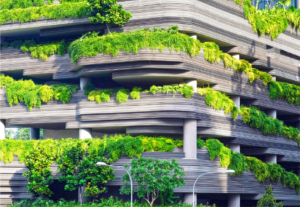Architecture has to change as the climate changes with time. Climate change poses an existential crisis with an increasing rate of carbon dioxide concentration in the environment. Buildings are adapting according to the current need of the global climate. Human beings require a comfortable interior environment that could help to serve their needs, protect and benefit them from the natural conditions in the best way possible. Climate is the most important factor that impacts both the architecture and planning of the area.
It is important to determine accurate weather patterns, soil conditions, wind flow and direction, temperature and path of the sun. These facts lead to the best sustainable design possible in construction. Climatic conditions affect the arrangement of building design, determines the requirements, construction methods. Different climatic patterns create regional architectural characteristics.
One of the most important concerns in designing is to figure out a way to get minimum heat inside the building during the hottest season of the year and lose minimum heat during the coldest season. Climatic comfort needs to be achieved by means of economical use of building materials and construction systems. The use of local material is the best-suggested way here; these materials are always economical and climate responsive.
External climatic components like sun rays, air temperature, humidity, precipitation impacts the internal environment of the building.
Sun and temperature
Sun being one of the most crucial climatic factors, is an important energy source in heating and lighting forms and surfaces of the buildings. Sun is the best source of light whose quality varies throughout the day and according to the seasons. In order to use sun at the maximum level, refraction components, solar panels, natural lighting is used in architectural designing.

Pressure and winds
The direction of buildings is determined according to the dominant wind directions of the region throughout the year. It is possible to increase or decrease the amount of pressure in the direction of the wind by means of corridors created between buildings. Proper ventilation and constant airflow is required inside the buildings, especially in hot and dry regions.
Changing facades
Dynamic facade, screenings are opted for the better internal comfort of the building. Movable metal plates can be used to maintain and control the heat and wind flow according to the requirements. Screening patterns act as a beautiful sunshade; it involves a double layer of the facade to make the sunlight soft in summers providing natural light and cooler environment. With new advanced material and technology, contemporary architecture has taken its turn towards dynamic and static designs. These kinds of dynamic and kinetic designs help a lot in the progress of sustainable and climate-responsive architecture.
HVAC
Proper heating and ventilation systems are installed in order to maintain the inner environment and reduce the energy costs of a building. It involves the incorporation of most efficient heating, ventilation and air conditioning systems. These systems basically involve everything from air conditioning at residential units to the large systems used in industrial level buildings. A good HVAC system aims to provide thermal control and comfortable indoor living conditions. These are carefully calculated systems based on thermodynamics, fluid mechanics and heat transfer. It reduces the energy requirements of a building as much as half of what they would have used, hence, making the structure environment-friendly and cost-efficient.
Landscaping

Only regional plants are preferred to plant considering they will require comparatively less care and can grow in the natural environment. No extra resources will be wasted on landscaping. Water efficiency is taken care of with design elements like rain gardens, constructed wetlands; perforated pavers can help retaining rainwater which can be used in the maintenance of landscaping area and retaining water table.
Vertical gardens, terrace gardens are incorporated which maintains the cooling of the building. Green roofs, open spaces, hardscape, and softscape elements can reduce the heat island effects of the building. It helps to lower the energy consumption and temperature of the whole project site.
It is necessary to find the right solutions for development and design in terms of climate utilization and protection by considering the surroundings. Fast population increase and unplanned urbanization lead to an unhealthy, characterless development. This process affects the quality of urban life and stands out as a planning and design problem.



